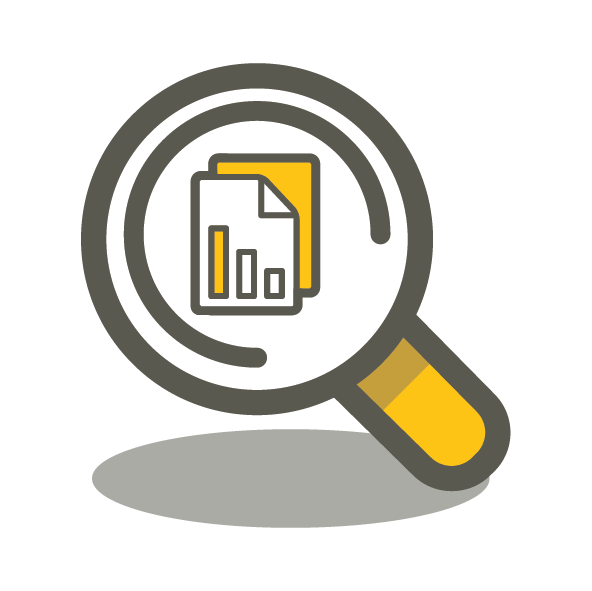Finance teams are now playing an increasingly significant role in the strategy of a business – not just reporting the historic performance and position, but looking forward and forecasting, mapping, and planning the future – helping to mould and realise the business goals and objectives.
Therefore, finance functions must utilise the best tools available to support and enhance their deliverables. It is clear to many of the people tasked with running a finance department how technology such as intuitive cloud accounting software, effective stock management systems, and efficient reporting platforms, can impact a finance function and its effectiveness. But how can AI be used as a tool to provide greater efficiencies and further enrich the financial analysis and output?
USE CASES
There are so many potential use cases where AI can assist with the workload, processing, analysis, and controls within your finance function. Here are a few that we want to highlight:
- Forecasting – AI can assist with predictive analytics, identifying patterns and trends, and then visualising these by rendering charts and graphs.
- Processing data – Already commonplace, Optical Character Recognition software can read documents such as purchase invoices, map the data into fields and then code appropriately using set rules and workflows. This reduces risk in a normally error prone area of data entry and processing.
- Expense management – AI can assist with several steps within the procurement process and supplier onboarding, ensuring you have identified the best provider on the market, and then monitor this going forwards.
- Risk Management – AI can help with fraud detection, as well as the engagement and Know-Your-Client and Anti-Money Laundering procedures, saving your team time and again being able to continually monitor risk going forwards.
- Credit scoring – to assist in debt collection and management of late payments – AI can analyse customer behaviours to create bespoke collection strategies and then action these strategies by sending automated reminders, statements and similar – reducing human labour and input on routine tasks.
- Customer Support – Chat bots can be utilised to solve user queries quickly and efficiently – this is best for routine questions around account maintenance, statements, balances, copy invoices, etc.
- Any area with repetitive tasks – Robotic Process Automation (RPA) can be employed in numerous scenarios to perform routine and repetitive tasks, saving labour time and energy. For example, bank statements can be accessed and downloaded overnight, ready for the team first thing the next morning.
CHALLENGES
The key challenge to contend with is likely to simply be the shift in mindset. Accountants by nature tend to be risk averse, so embracing an area of technology that is relatively unknown and continually evolving goes against this.
That being said, the lack of understanding of something should not hold back investment in and commitment to it, especially when the benefits are so clearly demonstrable.
Once you achieve buy-in, be sure to invest sufficiently in the technology, including the training and support for this tech to maximise your return. Technology or AI alone will not solve the business problem – it still needs to be implemented, operated, maintained, and supported properly in order to be effective and generate the desired outcomes and return on the investment.
From experience, there is nothing more frustrating than badly implemented technology! It has the opposite impact on an organisation or a finance function to what it should – it swallows resources, energy and momentum. Something any finance department, or business, can ill-afford.
DRIVING CHANGE
There are often key triggers or situations that will drive change within an organisation. Look out for these triggers and use them as an opportunity to consider if AI can help. Take a step back and consider all possibilities, consult an external expert – a change manager or a digital transformation specialist, to ensure all options are explored and you are reviewing the best software options available on the market. Consultants will have already undertaken a lot of research and analysis on software, so tap into this knowledge rather than starting your project from scratch.
Internal triggers and drivers to be aware of will include things like a review of structure, people and processes, prompted by a leaver or retirement among the finance team staff pool. Similarly, new hires bring new experience and ideas. A change of ERP system can create opportunities, and simply growth in transactions or workload will force people to reconsider how they do things.
External triggers can be things such as government mandates and legislation (MTD for VAT being a recent example), social or political changes (such as Covid driving a lot of remote cloud conversions), as well as more generally board directives and/or organisational digitalisation drives.
JOB SECURITY & AI
There are many concerns that AI will replace many different jobs, both administrative and creative, given recent advancements. However, you could argue that you are more at risk if you do not adopt and embrace technological changes – if you fight the inevitable, you will simply be left behind.
The bottom line is that time is a finite resource, and when people complain of being time poor, AI provides a simple solution to this.
- Low priority tasks can be handed off.
- Productivity of employees and teams can be increased.
- Better Work/Life balances for all levels of employee can be obtained.
The ethical and regulatory landscape around AI continues to evolve and is worth monitoring but this will be an ongoing and potentially never-ending process given the rate and extent of change.
HOW TO BENEFIT
To benefit from using AI as a tool within your finance function does not require you to be an expert in the topic, an awareness and curiousness will take you far. Embrace it – experiment, identify use cases, and test things. There will be some easy wins available, so take small steps, breaking projects into phases, but know that the significant benefits will only show themselves once the technology is utilised effectively.
Be aware that, like most things, any AI employed in your finance team will rely on good data. The data needs to be clean, and you must have good digital data architecture – that is how it is stored, labelled and referenced. This will all contribute to any AI technology being more accurate and efficient, and subsequently your finance function being more effective.
If you are a financial controller, finance director, or similar and any of the above sparks something for you, feel free to get in touch with the Menzies technology sector team, or one of our Digital Transformation consultants.





